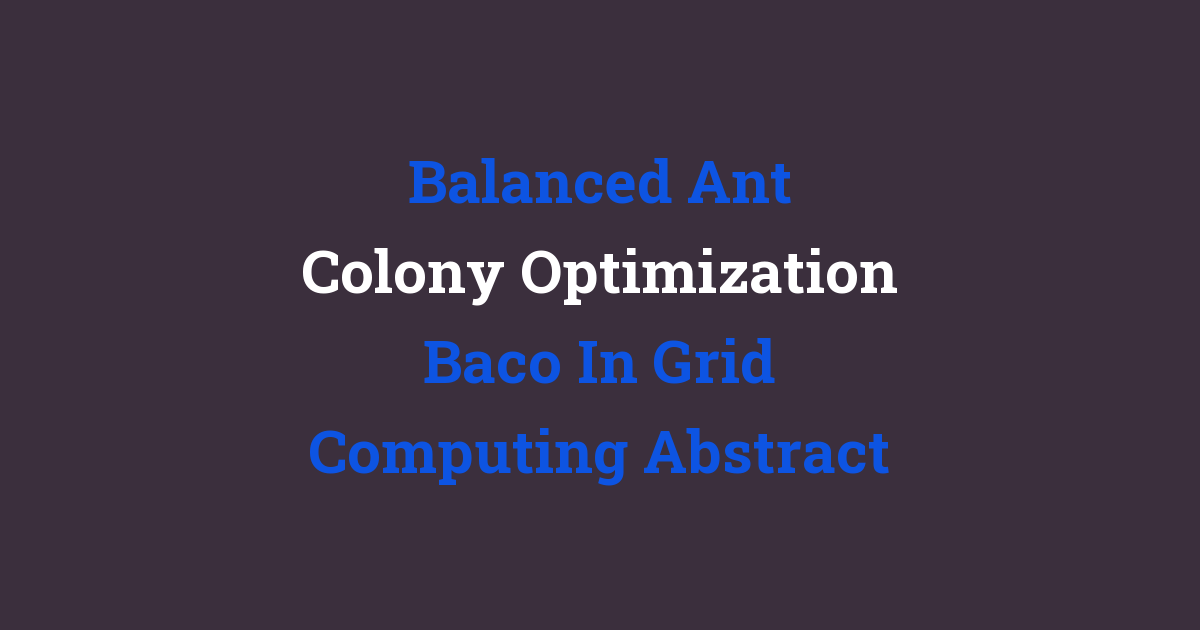Abstract: A balanced approach to ant colony optimization (BACO) is applied in grid computing.
Introduction
In today’s world of technological advancements, grid computing has gained significant popularity due to its ability to efficiently process large volumes of data across multiple interconnected computers. However, one of the challenges faced in grid computing is achieving optimal load balancing across all the nodes in the system. This is where Balanced Ant Colony Optimization (BACO) comes into play.
Problem Statement
The main problem faced in grid computing is the uneven distribution of workload among the nodes, leading to inefficient resource utilization and increased processing time. This imbalance can result in bottlenecks and decreased system performance. Traditional load balancing algorithms may not be able to effectively address this issue, leading to suboptimal performance in grid computing environments.
Existing System
In the existing system, traditional load balancing algorithms such as Round Robin, Least Connection, and Weighted Round Robin are commonly used to distribute workload among the nodes in grid computing. While these algorithms may work well for smaller systems, they may not be efficient in larger and more complex grid computing environments.
Disadvantages
Some of the disadvantages of the existing load balancing algorithms include:
1. Inability to adapt to changing system conditions
2. Lack of optimization for dynamic workloads
3. Limited scalability in large grid computing environments
Proposed System
To address the shortcomings of the existing load balancing algorithms, a new approach called Balanced Ant Colony Optimization (BACO) is proposed. BACO is inspired by the foraging behavior of ants, where they communicate with each other to find the shortest path to food sources. In BACO, each ant represents a solution to the load balancing problem, and they work together to find the optimal distribution of workload among the nodes in the grid computing system.
Advantages
Some of the advantages of using BACO for load balancing in grid computing include:
1. Improved system performance and efficiency
2. Enhanced scalability for large and dynamic workloads
3. Adaptive algorithms that can react to changing system conditions
Features
Some of the key features of BACO include:
1. Ability to dynamically adjust to workload changes
2. Distributed computation for improved efficiency
3. Self-optimization for better resource utilization
4. Parallel processing for faster convergence
Conclusion
In conclusion, Balanced Ant Colony Optimization (BACO) presents a promising solution to the load balancing challenges faced in grid computing environments. By leveraging the collective intelligence of ant colonies, BACO can effectively distribute workload among nodes, leading to improved system performance and efficiency. Further research and experimentation are needed to fully realize the potential of BACO in grid computing, but the initial results are promising.

